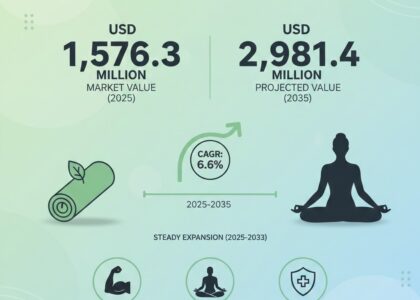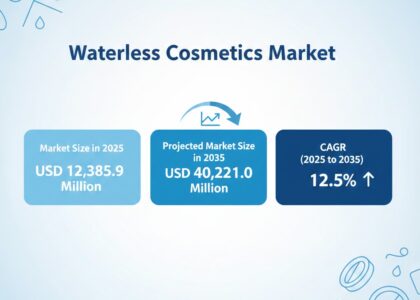The anti-static liners market is presently worth US$ 523.43 billion and is projected to achieve a Compound Annual Growth Rate (CAGR) of 6.2% from 2022 to 2032. This growth is anticipated to propel the market to a value of US$ 626.46 billion by 2032, driven by the dynamics of global economic expansion.
The global Anti-Static Liners market is geographically segmented into various regions, including North America, Asia-Pacific Excluding Japan, Japan, Eastern Europe, Western Europe, Latin America, and the Middle East and Africa. Notably, the penetration of anti-static liners is most prominent in developed regions such as North America, Europe, and Japan.
Many companies in these developed regions prioritize protective packaging and have adopted anti-static packaging solutions for their branded products. The high penetration of electrical and electronics component production in these areas further drives the demand for anti-static liners, given the critical need to protect sensitive electronic components from electrostatic discharge.
Significantly, the demand for anti-static liners is surging in the Asia-Pacific and Latin America regions. This is largely due to the increasing use of electrostatic discharge-prone products like semiconductors and printed circuit boards (PCBs), as these regions witness extensive usage of electrical and electronic devices. The Middle East and Africa (MEA) region also present untapped growth potential in the anti-static liner market, offering opportunities for expansion in the coming years.
Request Sample: https://www.futuremarketinsights.com/reports/sample/rep-gb-5916
Key players
Some of the key players in the global Anti-Static Liners market are
- International Plastics Inc.,
- Desco Industries, Inc.,
- Berlin Packaging L.L.C.,
- Air Sea Containers Ltd.,
- CDF Corporation,
- Lormac Group,
- Nittel GmbH & Co KG,
- Static Solutions, Inc., etc.
Anti-Static Liners: Market Dynamics
- Industry Growth: The demand for anti-static liners is closely tied to the growth of industries that handle sensitive electronic components and materials. As these industries expand, the need for anti-static solutions increases, driving market growth.
- Technological Advancements: Advancements in materials and manufacturing processes have led to more effective and durable anti-static liners. Innovations in this sector can significantly impact market dynamics, as companies seek better solutions to protect their products.
- Regulatory Compliance: Stringent regulations related to the handling and transportation of sensitive materials, especially in the electronics and pharmaceutical industries, drive the adoption of anti-static liners. Compliance with industry standards and regulations is a key driver for the market.
- Global Supply Chain: The international nature of many industries means that anti-static liners are needed for the safe transport of products across borders. As global supply chains expand, the demand for these liners increases.
- E-commerce Growth: With the surge in online shopping, the packaging and transportation of electronic gadgets, consumer electronics, and other sensitive products have increased. This trend has a positive impact on the anti-static liner market.
- Environmental Concerns: There is a growing emphasis on sustainable and eco-friendly packaging solutions. Companies are increasingly looking for anti-static liners that are not only effective but also environmentally responsible.
- Competitive Landscape: The market for anti-static liners is competitive, with numerous companies offering various solutions. Competitive pricing and the ability to provide tailored solutions can significantly influence market dynamics.
- Customer Awareness: As companies become more aware of the potential damage that static electricity can cause, the demand for anti-static liners is likely to grow. Education and awareness campaigns play a role in market dynamics.
- Economic Factors: Economic conditions, including inflation, interest rates, and overall business health, can impact the buying decisions of companies. Economic downturns may lead to reduced spending on anti-static solutions, while economic growth can boost demand.
- Geopolitical Factors: Trade tensions, tariffs, and geopolitical instability can affect the supply chain and cost structures of anti-static liners, which, in turn, can influence market dynamics.
Request Customization: https://www.futuremarketinsights.com/customization-available/rep-gb-5916
Anti-Static Liners: Market Segmentation
Anti-Static Liners market segmentation by product type–
- Rigid
- Flexible
Anti-Static Liners market segmentation by end use –
- Electrical & Electronics
- Chemical
- Automotive
- Aerospace
- Others
About Future Market Insights (FMI)
Future Market Insights, Inc. (ESOMAR certified, recipient of the Stevie Award, and a member of the Greater New York Chamber of Commerce) offers profound insights into the driving factors that are boosting demand in the market. FMI stands as the leading global provider of market intelligence, advisory services, consulting, and events for the Packaging, Food and Beverage, Consumer, Technology, Healthcare, Industrial, and Chemicals markets. With a vast team of over 5000 analysts worldwide, FMI provides global, regional, and local expertise on diverse domains and industry trends across more than 110 countries.
Contact Us:
Future Market Insights Inc.
Christiana Corporate, 200 Continental Drive,
Suite 401, Newark, Delaware – 19713, USA
T: +1-845-579-5705
For Sales Enquiries: sales@futuremarketinsights.com
Website: https://www.futuremarketinsights.com
LinkedIn| Twitter| Blogs | YouTube






